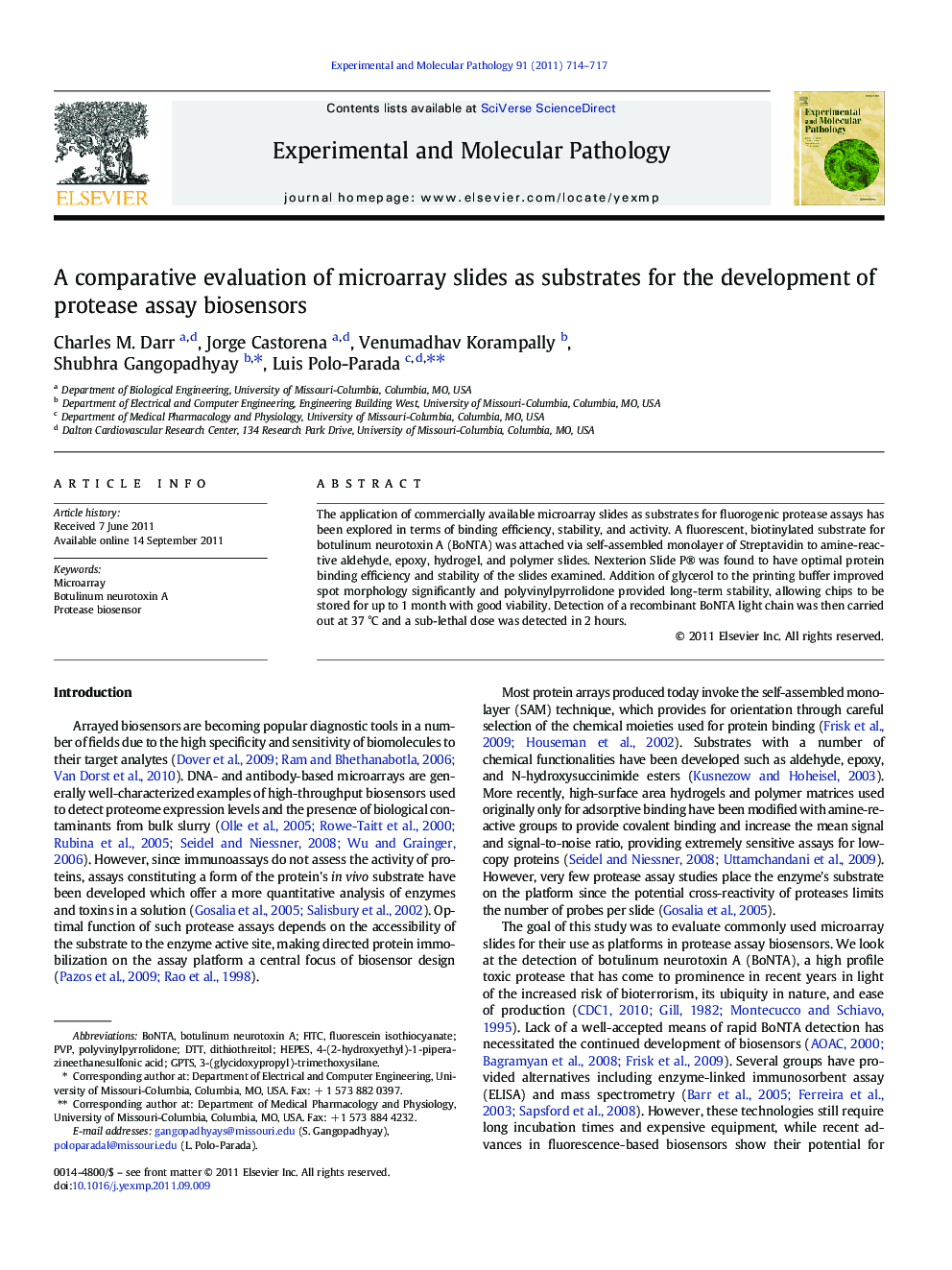| Article ID | Journal | Published Year | Pages | File Type |
|---|---|---|---|---|
| 2775205 | Experimental and Molecular Pathology | 2011 | 4 Pages |
The application of commercially available microarray slides as substrates for fluorogenic protease assays has been explored in terms of binding efficiency, stability, and activity. A fluorescent, biotinylated substrate for botulinum neurotoxin A (BoNTA) was attached via self-assembled monolayer of Streptavidin to amine-reactive aldehyde, epoxy, hydrogel, and polymer slides. Nexterion Slide P® was found to have optimal protein binding efficiency and stability of the slides examined. Addition of glycerol to the printing buffer improved spot morphology significantly and polyvinylpyrrolidone provided long-term stability, allowing chips to be stored for up to 1 month with good viability. Detection of a recombinant BoNTA light chain was then carried out at 37 °C and a sub-lethal dose was detected in 2 hours.
► Microarray slides were tested as substrates for protease assay biosensors. ► Nexterion Slide P® had optimal signal-to-noise ratio and binding stability. ► Glycerol with humidity was found to improve spot morphology. ► Buffer additive PVP improved binding stability long-term and in assays. ► Botulinum neurotoxin A was detected in sub-lethal doses in 2 hours.
